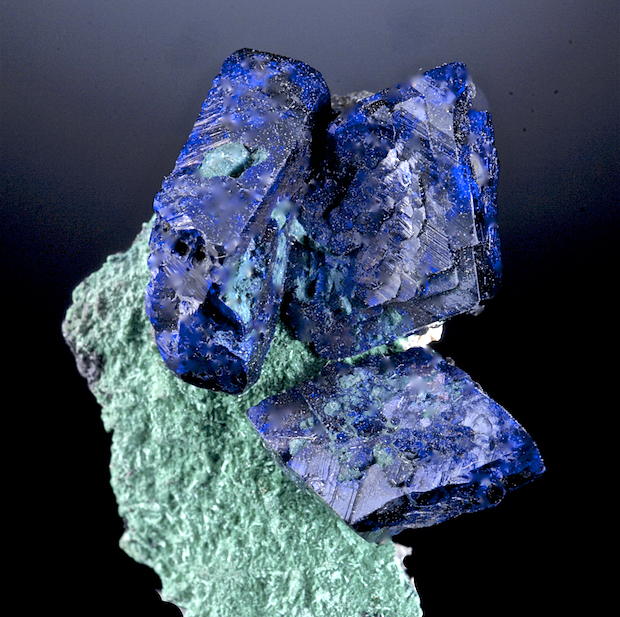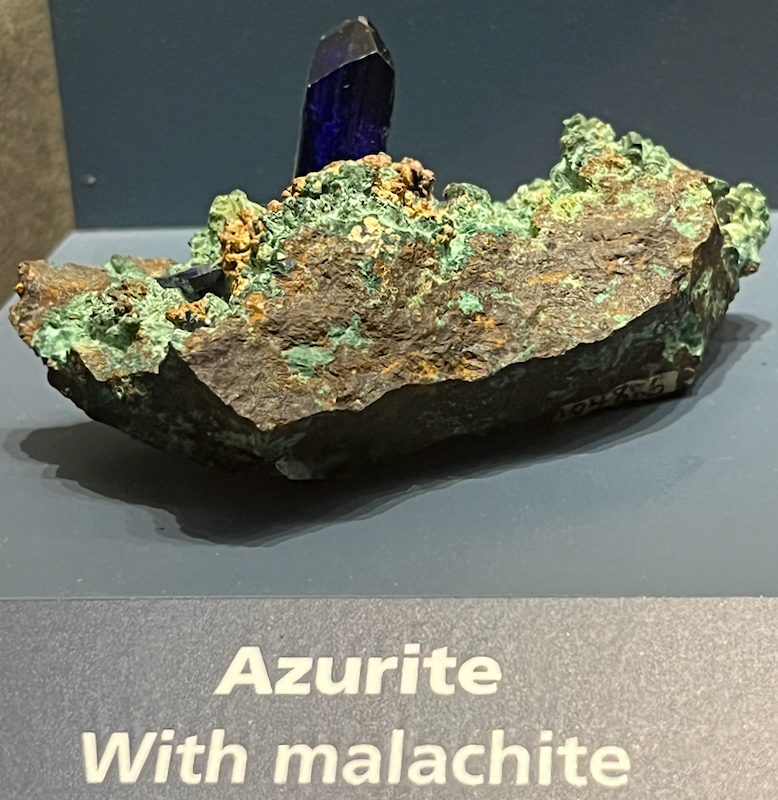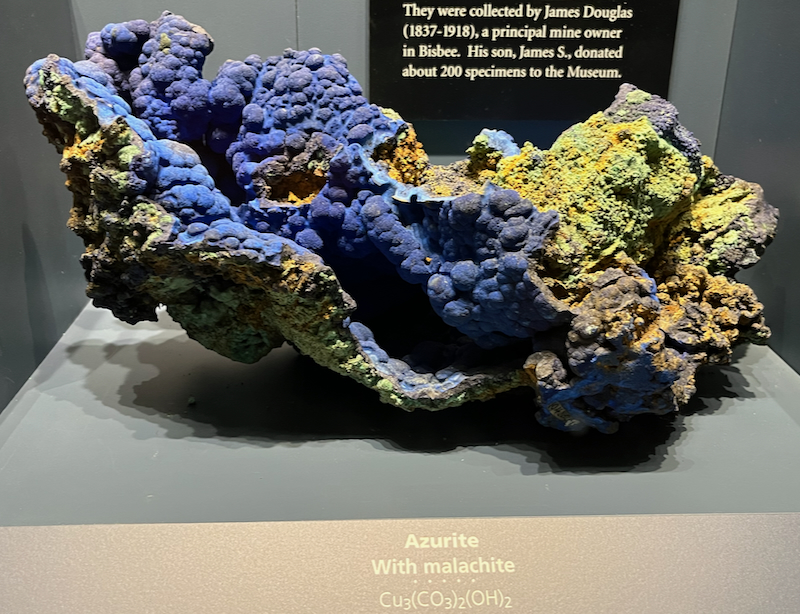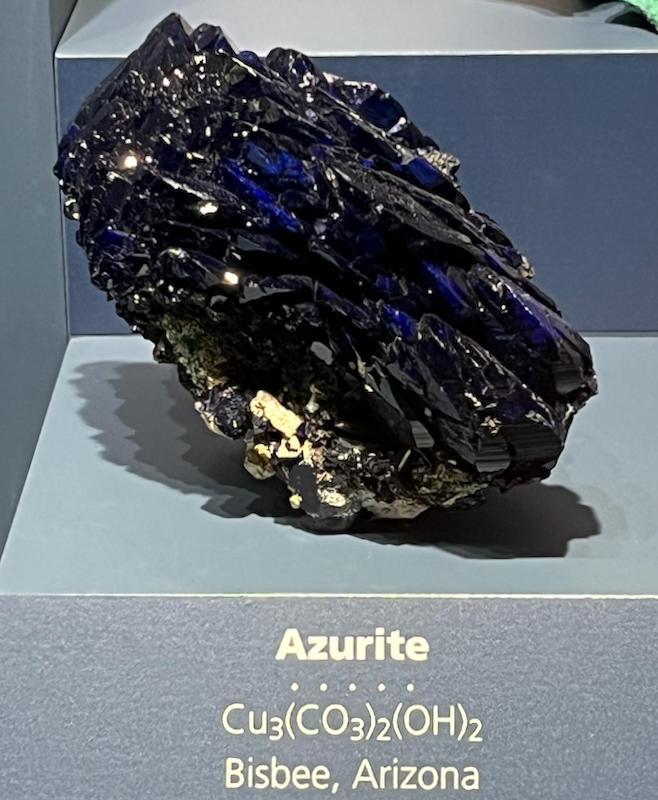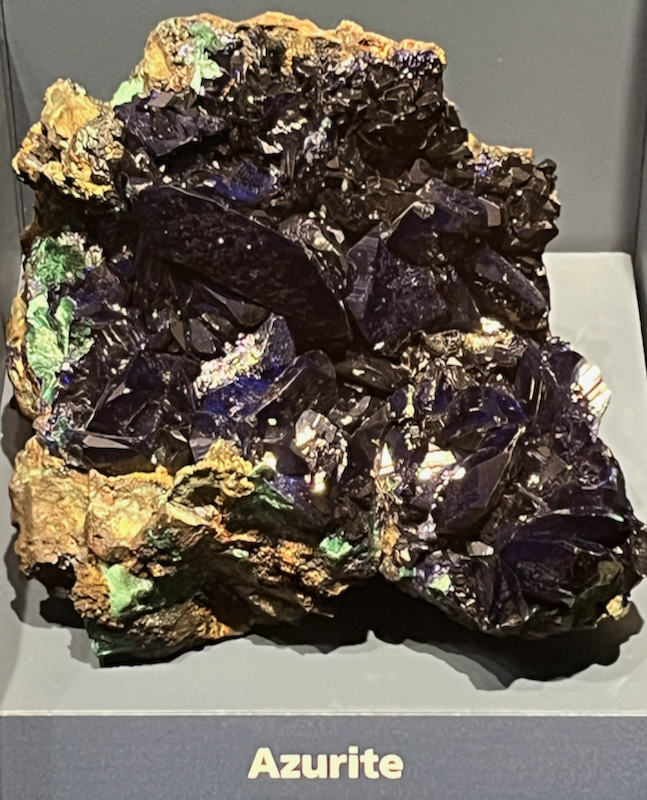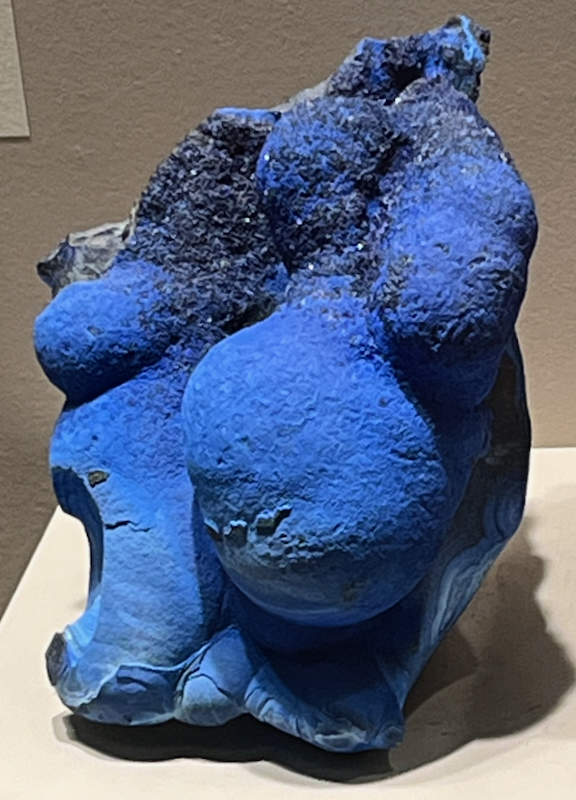Azurite
Some people describe the ideal sky as being “azure blue.” The deep, saturated blue of azurite was one of the main sources of blue paint for artists in medieval times. Sadly for those artists, a lot of the beautiful blue skies and clothing they painted in their artworks are now beautiful green skies and clothing. What happened? Over time, the azurite, which is not super stable, turned into malachite, which has a lovely green color and is much more stable. On a lot of collectors’ azurite mineral specimens, parts of the specimen will be in the process of turning into malachite. For both of those minerals, their main ingredient is copper, and they’re both carbonate (CO3) minerals. They’re also both hydroxide (OH) minerals, but azurite has a little more OH than malachite, and if it loses that extra, it can become malachite. Since azurite is one of the most popular minerals for collectors, a lot of people have azurite/malachite combo specimens. Collectors also have a lot of “pseudomorphs” from those two minerals, with the crystal having the shape of an azurite crystal but being totally green and made up entirely of malachite.
| Formula | Group or Type | Shape | Hardness | Specific Gravity | Streak | Luster |
|---|---|---|---|---|---|---|
| Cu3(CO3)2(OH)2 | — | Monoclinic | 3.5–4 | 3.7–3.9 | Light blue | Vitreous or earthy |
